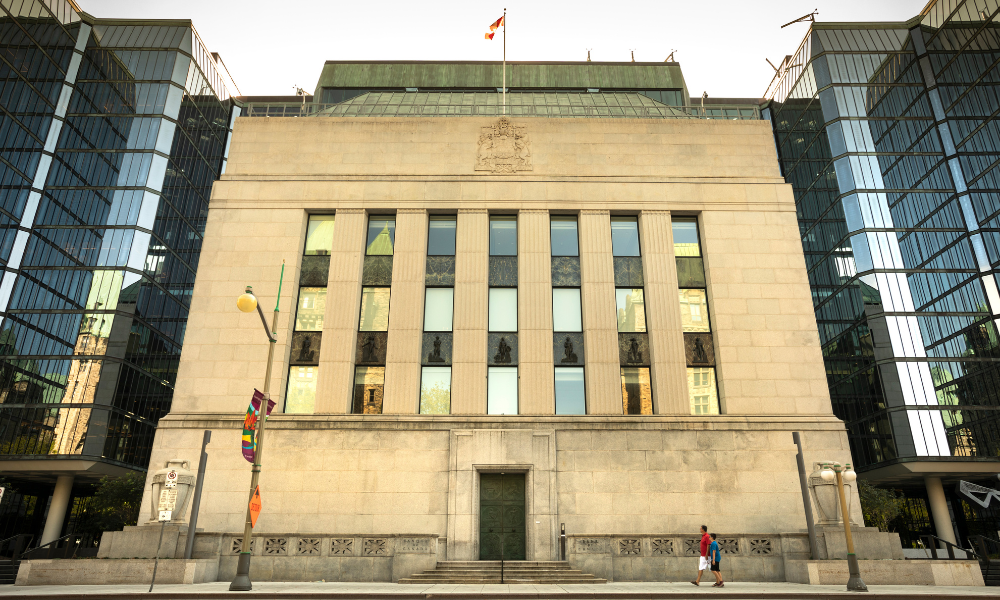The central bank seems to be weighing up an even larger increase than we’ve seen this year to date

Some observers have sounded the alarm about the possible risk posed by rate hikes to Canada’s housing market – but the Bank of Canada doesn’t appear in any mood to step back from its current rising-rate trajectory, if comments last week from Governor Tiff Macklem are anything to go by.
Speaking after the central bank released its annual Financial System Review, Macklem said it may take a benchmark interest rate of 3% or above to tame inflation, and indicated even larger rate increases than the last two half-point hikes could be coming down the line.
In addition to making further moves to return inflation to its target level, the Bank may also need to “take a larger step,” Macklem said, appearing to dismiss the possibility that a housing market downturn could change its thinking on further hikes.
“The housing market is an important part of the economy,” he said. “We are watching it closely, but our focus ultimately is on the whole economy and in getting inflation back to target.”
The Bank finds itself in something of a tight spot where inflation and rate hikes are concerned, Daryl Hosein, vice president at Coast Capital Savings, told Canadian Mortgage Professional.
Supply and demand complications are colliding in the current environment, with the economy in excess demand while supply chain snarls continue to pose a challenge.
Those factors, coupled with tightness in the labour market, are helping worsen the inflation crisis – and the Bank’s task in getting the situation under control is no easy one, Hosein said.
Read next: Canada home prices – why they're falling
“Of course [the Bank] don’t control directly what’s happening in Russia or Ukraine or supply chain issues coming out of the other side of the world, but the piece of the equation that they can influence is on the demand side,” he said.
“They are trying to eliminate excess demand in the economy – and that’s a really tricky thing to do. They’re moving rates to try to bring in that demand. Their expectation, or what they’re targeting, is to reduce this demand, but certainly not at this point to take us to a situation that would cause a recession.”
The Bank’s efforts to find a so-called “soft landing” for the economy are based around finding the neutral rate – a rate that’s neither stimulating nor constraining demand. “That, of course, is a delicate balance,” Hosein said.
In its April 13 announcement, the Bank adjusted that neutral rate upwards by 25 basis points, a move that CIBC World Markets deputy chief economist Benjamin Tal told CMP had “given them the green light to be a bit more aggressive than otherwise” on rate hikes.
The Bank’s actions in rising rates are set to have a significant impact on aggregate demand, Hosein said, with the consequences for the housing market already becoming apparent as sales across most markets continue to fall.
“I think rate increases will definitely have an effect on people looking to purchase housing. Effectively your dollars will not go as far in that environment, and you likely will be qualifying for a smaller mortgage overall,” he said.
Read next: Bank of Canada announces another oversized rate hike
“This is going to have a cooling effect on housing. I think that’s expected with the rate increases – the Bank of Canada has highlighted the indebtedness in the economy, especially the focus on housing.”
The Bank’s balancing act is exemplified by the fact that moving too fast on rate hikes could drive the country into a recession, while going too slowly risks allowing inflation to run amok and eventually become entrenched.
Macklem’s forceful language on the Bank’s future rate trajectory led to some speculation that it could be set to introduce a three-quarter-point increase at its next policy rate announcement, scheduled for mid-July.
A variety of factors are likely to influence the central bank’s decision on whether its next hike is 0.5% or 0.75%, Hosein said, including how much inflation continues to rise both at home and abroad.
“I think both [a half-point and three-quarter-point increase] are probably on the table for discussion,” he said. “Even today, we’re seeing higher inflation prints out of the US as well, and that may impact their decisions.
“Whether it’s 0.5% or 0.75%, it’s really a function of the Bank of Canada continuing to highlight that they’re taking this seriously and they do need to provide some inflation control over the medium term. They’ll need to be reactive and be able to show the markets that they are doing what they can to bring this under control.”



